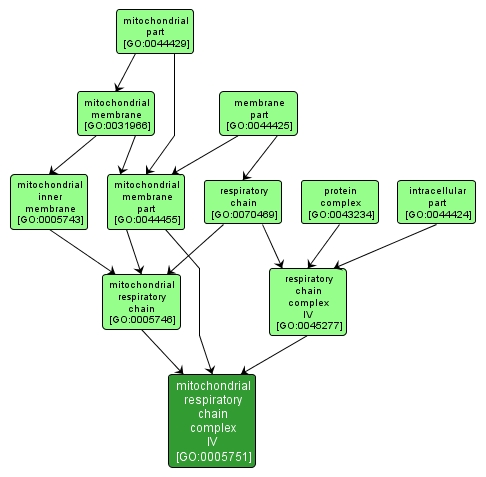| Desc: |
A protein complex located in the mitochondrial inner membrane that forms part of the mitochondrial respiratory chain. Contains the 13 polypeptide subunits of cytochrome c oxidase, including cytochrome a and cytochrome a3. Catalyzes the oxidation of reduced cytochrome c by dioxygen (O2). |














